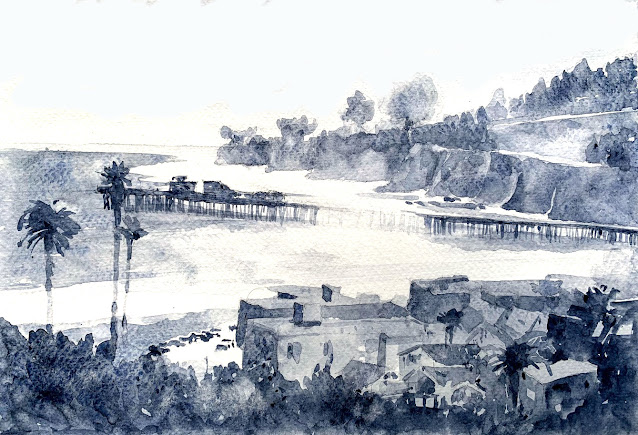Faith vs. belief, and inspiration

In yesterday's Gita session, we discussed the difference between belief and faith. I found myself saying that a belief was hard-edged and inflexible, and faith all-encompassing and flexible and always positive - akin to having a big-picture trust in the cosmos. When I heard myself say "hard-edged," it made me realize how many terms and ideas are so interchangeable between the world of watercolor (art) and spirituality (life). When edges are hard, the eye stops at each edge before it goes to the next "item." It's like stop-and-go traffic. You are making progress but it is not smooth, not a flow. When edges are soft, your eyes travel easily, from one object to the next because the divisions between the objects are blurred, and the values do the talking. It is like life, like consciousness. We are all one - not so hard-edged and separate - yet we don't know it, and bump up against one another because of our hard edges, fixed ideas and notions, prejudices an...





